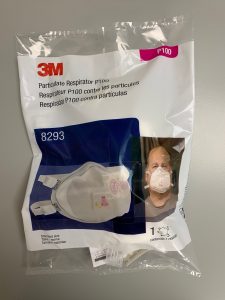The Centre for Disease Control and National Institute of Occupational Safety and Health recommend the use of HEPA (P100) quality filters for respiratory protection against the Hantavirus.
Respirators come in various sizes and it is important to use a respirator that has been fitted to your face.
It is very important that workers are aware of how to achieve the maximum protection afforded by the approved respirator. This protection depends mainly on the seal between the wearer’s face and the respirator face piece. In order to prevent inward leaks of contaminated air, the wearer must be clean-shaven where the face piece contacts the skin of his/her face. Unusual facial contours, scars and other skin conditions, i.e. eyeglasses and missing dentures, may also interfere with the seal.
FIT CHECKING: SIX STEPS TO FITTING YOUR RESPIRATOR
A respirator must be fit tested prior to goggles or glasses being applied to face. An effective seal cannot be achieved with facial hair. Therefore, you must be clean-shaven when using a tight-fitting respirator.

